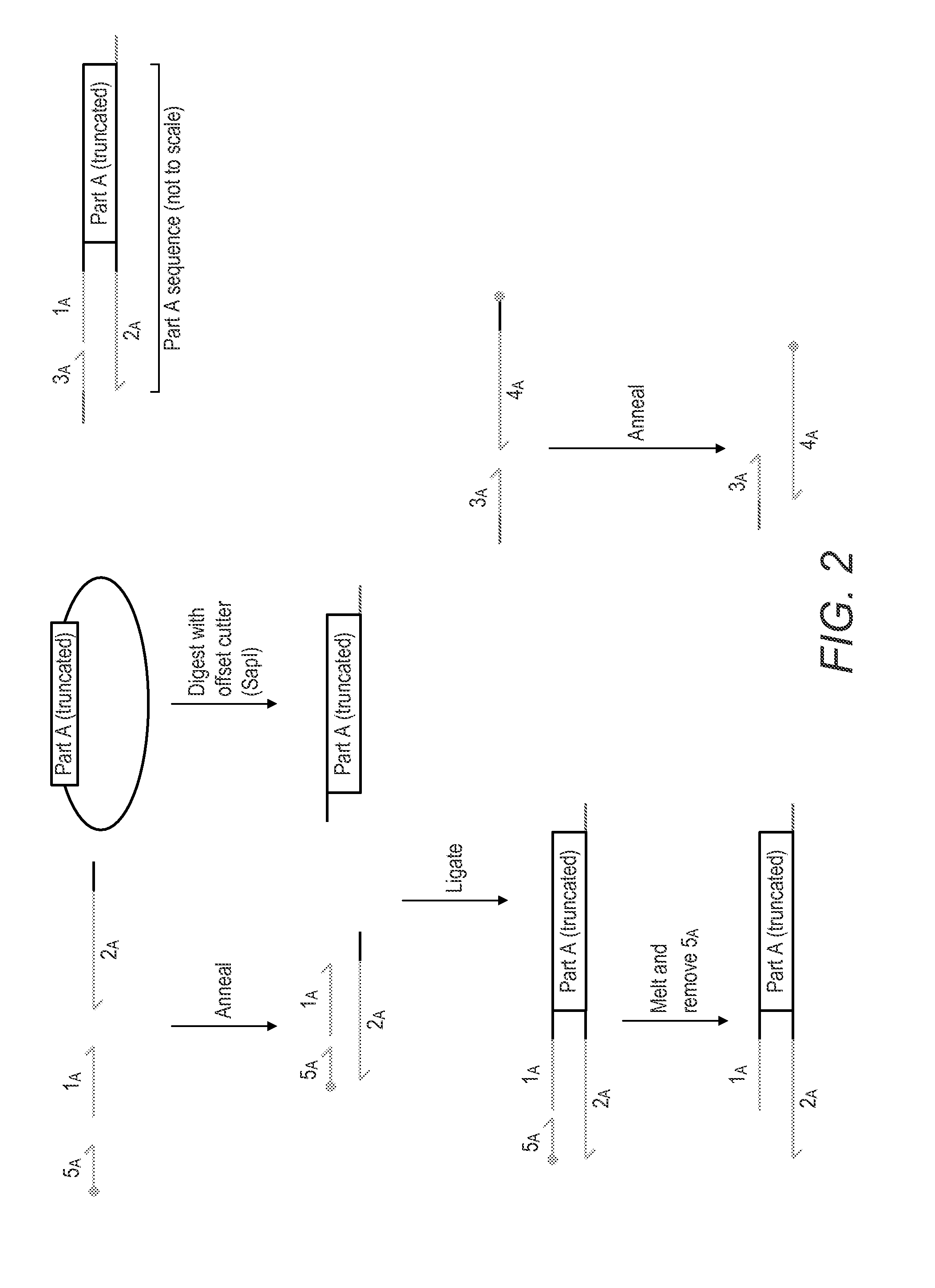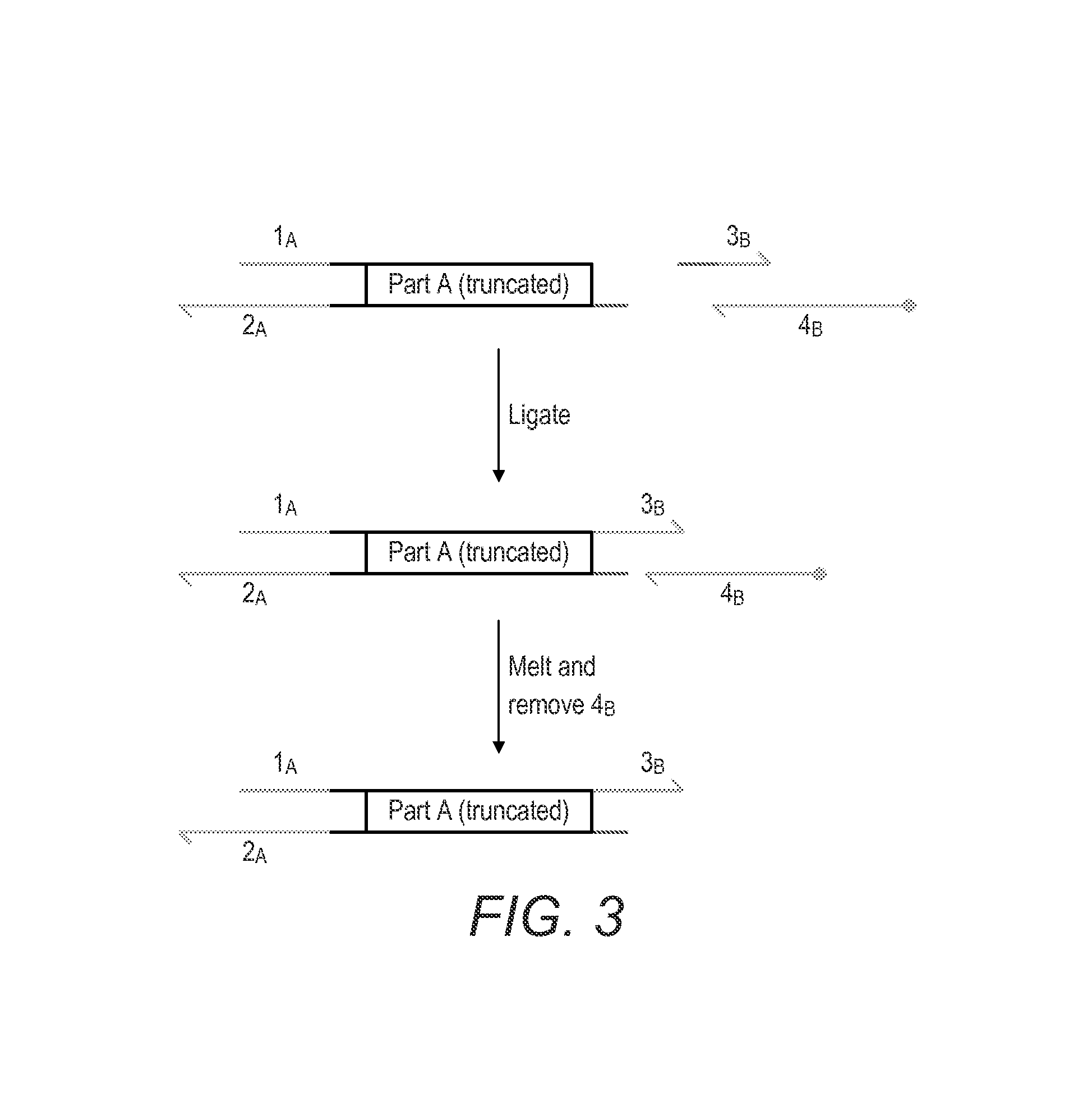Method And Device
a polynucleic acid sequence and assembly technology, applied in the field of assembly of polynucleic acid sequences, can solve the problems of repeated copies of the same fragment, difficulty in handling repetitive sequences with fragments, and inherently error-prone operation of pcr, so as to achieve the effect of reducing error rates and reducing delay
- Summary
- Abstract
- Description
- Claims
- Application Information
AI Technical Summary
Benefits of technology
Problems solved by technology
Method used
Image
Examples
example 1
[0498]Protocols for on-Chip Assembly
[0499]The biology reactions consisted of two 2-part assemblies: RFP or GFP with a plasmid backbone pSB1C3 (pSB1C3 is also referred to herein as 1C3 or 1c3). pSB1C3 encodes resistance to the antibiotic chloramphenicol. A successful assembly of pSB1C3.GFP produces green cells and a successful assembly of pSB1C3.RFP produces red cells. The number of colonies (yield) and percent of colonies with correct phenotype (efficiency) was determined for test assemblies performed both on chip (using the microfluidic device) and off chip (in the conventional fashion with tubes and pipettes).
[0500]The following parts (nucleic acid sequences), oligos (linkers) and reagents were used, as shown in FIGS. 9 and 10.[0501]Pre-prepared parts:[0502]pSB1C3 DNA pre-digested with EarI[0503]RFP DNA pre-digested with EarI[0504]GFP DNA pre-digested with EarI[0505]uncut pSB1C3.RFP as a positive control for transformation[0506]2 pairs of part / linker oligos ...
example 2
Chip 3A
[0606]A microfluidic device as shown in FIG. 14A was manufactured using cnc machining and tested by washing fluid through the device.
example 3
5-Part Assembly on Chip
[0607]A five-part assembly (RFP, GFP, KanR, AmpR and pSC101) with 0% contamination was demonstrated twice. Two identical experiments were carried out involving two on-chip tests and two off-chip tests. First of all the 5 parts, buffer and water were loaded into a chip well, The 5 parts and buffer were pumped (˜0.5 uL of each part) sequentially into the main channel, pushed into the output well and collected with a pipette to form the product P1. 1 uL of Water from the water well was pumped into the output channel and pipette off the chip to waste. More water and then pumped and formed product P2. P3 was formed by a 5 parts assembly and the addition of 1.5 uL composed equally of blue and yellow food dye solution and mineral oil. P4 was a conventional off-chip 5 part assembly.
[0608]Table 3 summarizes the different products transformed and the results obtained.
TABLE 3Plate numberContentResultP15 parts ON-CHIP AssemblyAssembly successfulP2Water controlNo contamina...
PUM
| Property | Measurement | Unit |
|---|---|---|
| Efficiency | aaaaa | aaaaa |
| Efficiency | aaaaa | aaaaa |
| Efficiency | aaaaa | aaaaa |
Abstract
Description
Claims
Application Information
 Login to View More
Login to View More - R&D
- Intellectual Property
- Life Sciences
- Materials
- Tech Scout
- Unparalleled Data Quality
- Higher Quality Content
- 60% Fewer Hallucinations
Browse by: Latest US Patents, China's latest patents, Technical Efficacy Thesaurus, Application Domain, Technology Topic, Popular Technical Reports.
© 2025 PatSnap. All rights reserved.Legal|Privacy policy|Modern Slavery Act Transparency Statement|Sitemap|About US| Contact US: help@patsnap.com



